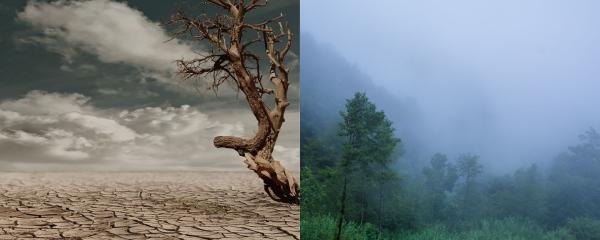
IIT Palakkad study shows how different indices used to predict drought combined with effects fof climate change can lead to different climate predictions for the future

IIT Palakkad study shows how different indices used to predict drought combined with effects fof climate change can lead to different climate predictions for the future
In a recent study researchers have assessed the ability of natural forest species and single-species (monoculture) plantations to capture and store carbon over a long period.
Searching for mates and predation risk can alter spatial interactions between tree crickets and green lynx spiders.
Scientists used mathematical models and satellite data to understand how seed dispersal from forest trees helps in maintaining the savanna–forest boundaries.
The four species of newly-discovered tiger moths. Left to right: First row: O. suryamal rekhae, O. suryamal. Second row: O. zedesi and O. ghatmatha [Image credits: Aparna Kalawate]
Thus hath the candle sing'd the moth.
O, these deliberate fools! When they do choose,
They have the wisdom by their wit to lose.
Eastern Ghat Cricket Frog [Image credits: Prudhvi Raj]
Researchers discover a visibly different individual of the Eastern Ghats cricket frogs, in the Western Ghats
Changing habitats force Western Ghats’ endemic lion-tailed macaques to alter their social structure to adapt, putting them at risk, finds study.
A new study puts the focus of the conversation on Climate Change on Climate Justice.
Study finds plants, which were earlier found in lower elevations, are now replacing the native vegetation of the higher altitudes.
Tetrastemma freyae [Image credits: Mohandhas S Vignesh]
Photo by Jan Kopřiva on Unsplash
Researchers use ultra-small graphene particles to develop a new soil moisture sensor